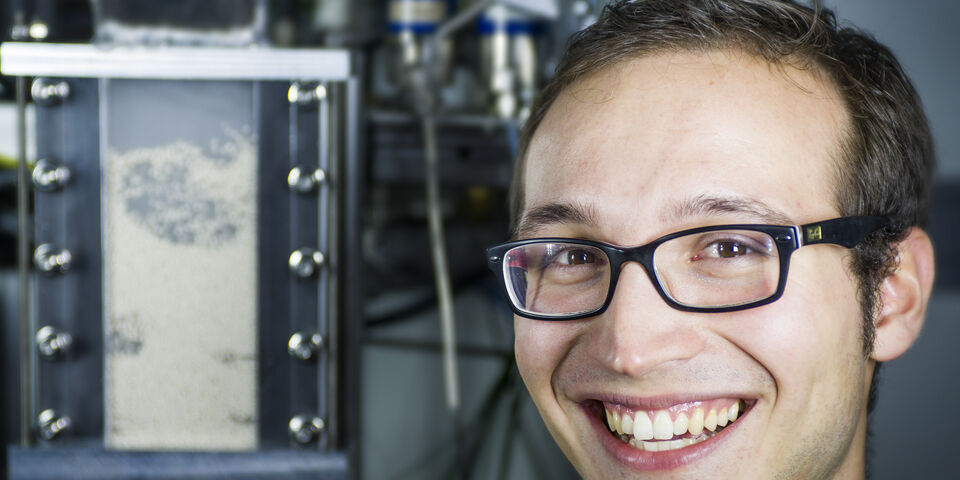Home Stretch | Hotspots in a fluidized bed
The production of plastic in fluidized bed reactors generates heat. This causes local hotspots which can disturb the production process or may even pose a danger to the reactor. Graduating student Tom Janssen (Chemical Engineering and Chemistry) uses an infrared as well as a high-speed camera to see how that heat spreads in a small-scale copy of a fluidized bed.
In so-called fluidized bed reactors the plastic granules are made that serve as the raw material for numerous products. In this process the raw material for the plastic (such as methane gas) is blown from below into a several meters high reactor vessel containing catalyst particles. These particles keep floating on the gas flow, whereby in the course of time long polymer chains are formed around the catalyst particles - resulting in plastic granules.
While this process has been applied in the industry for a long time already, there is still some room for improvement, says Tom Janssen. “In the reaction, heat is released. This often leads to hotspots, extra hot areas where the reaction does not proceed properly or, indeed, an undesirable substance is formed. In the worst case this could even damage the reactor.”
By distributing the heat across the reactor more evenly, the production process proceeds better and in a much more energy-efficient manner, because no heat is lost in the hotspots.
In order to gain more insight into what exactly is taking place in such a fluidized bed, Janssen is now looking to see what happens in a transparent miniature fluidized bed reactor some twenty centimeters high. This one does not produce any plastic, though, as he explains. “We use zeolite granules, a mineral that becomes warm when CO2 attaches itself to its surface. This is a good pilot system for what happens in the production of plastic, since the heat in my setup also emerges from inside the granules.”
The high-speed camera enables Janssen to follow the movements of the zeolite granules dancing on the gas flow, and the image in the infrared camera shows the granules that are heating up changing color from blue via green and yellow to red.
The former chairman of study association Japie compares the results of the measurements with a computer model developed inside his group which can also predict the heat transport in the much larger industrial reactors. That model has already shown, for instance, that cooling by means of cold gas does not proceed any faster when you increase the gas flow - in contrast to the prevailing opinion in the industry.
What Janssen says is so special about the group within which he conducts his final project (Multi-scale Modelling of Multi-phase Flows) is that they combine process technology with reaction chemistry. “I don’t only want to know how much heat is released from the zeolite granules, and how quickly, I am also trying to understand more about the underlying process. That combination I find tremendously inspiring.”


Discussion